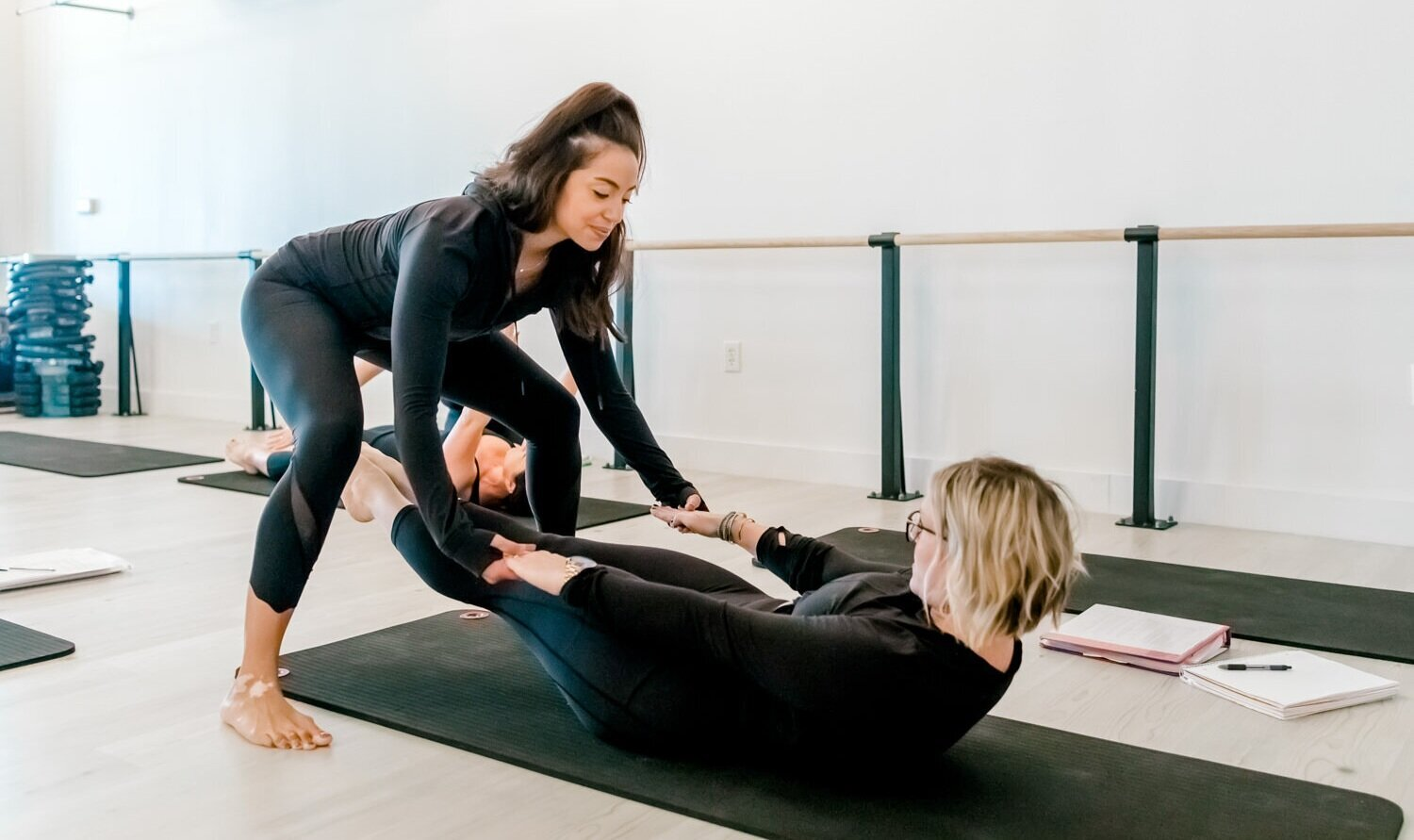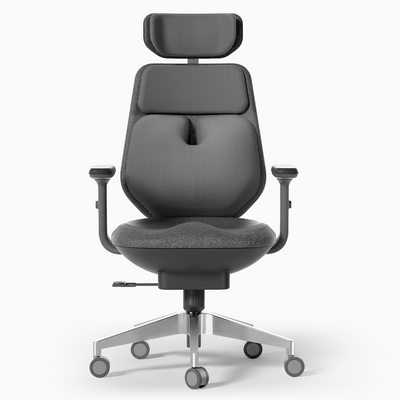
How to Become a Pilates Instructor in 2023: What You Need to Know
Are you passionate about Pilates and eager to share its numerous benefits with others? Becoming a Pilates instructor in 2023 can be a rewarding and fulfilling career path. This blog post will guide you through the essential steps, from understanding the Pilates method and choosing between classical or contemporary styles, to obtaining certification and building a successful teaching career. Get ready to embark on an exciting journey in the world of Pilates instruction!
Short Summary
-
Gain experience and knowledge in Pilates before becoming a Certified Instructor.
-
Choose an appropriate training program that meets your goals, preferences, and budget.
-
Cultivate relationships with clients to build a successful career as a Pilates instructor while staying up-to-date on trends & methods for growth opportunities.
Understanding the Pilates Method
The Pilates Method, developed by Joseph Pilates in the early 20th century, is a form of exercise that emphasizes strengthening the body, improving posture, and enhancing flexibility through pilates exercises. The core principles of Pilates, including concentration, control, centering, flow, precision, and breathing, are utilized to facilitate the practice and enable practitioners to attain the desired outcomes.
Practicing Pilates has been known to provide numerous benefits such as improved posture, increased flexibility, improved balance, increased strength, improved coordination, and improved mental clarity. These benefits make Pilates practice an attractive choice for many people and a solid foundation for those who wish to pursue a career as a Pilates instructor.
Choosing Your Path: Classical or Contemporary

Before diving into your pilates instructor training, it’s essential to choose the path that aligns with your personal preferences and teaching goals: classical or contemporary Pilates. Having a specialty and focus can provide direction for your practice and aid in establishing your own brand in the market, impacting the type of clients you take on and the areas you focus your Pilates training.
Let’s explore the differences between these two styles to help you make an informed decision.
Classical Pilates
Classical Pilates follows the original teachings of Joseph Pilates, emphasizing precise movements and strict adherence to his methods. Romana’s Pilates is an example of classical style. It offers a comprehensive instructor training program (ITP). This program is composed of three stages, each requiring the completion of mandatory activities such as group seminars, independent studies, private lessons, and a stage assessment.
Popular classical Pilates training programs include Power Pilates, which offers a comprehensive curriculum, including a few Pilates classes for beginners, intermediates, and advanced practitioners. Certification in classical Pilates typically involves a written and practical exam, ensuring that instructors have a thorough understanding of the original Pilates repertoire and teaching techniques.
By choosing classical Pilates, you’ll be immersed in the traditional exercises and techniques established by Joseph and Clara Pilates, while honoring the historical roots of this unique fitness method.
Contemporary Pilates
Contemporary Pilates, on the other hand, is a modern interpretation of the traditional Pilates method, incorporating variations and modifications to tailor the practice to individual needs and goals. This approach combines classical Pilates principles with a contemporary approach, integrating modern exercise science and physical therapy techniques.
The advantages of contemporary Pilates include its adaptability, enabling instructors to personalize the practice for individual requirements and objectives, and its focus on particular regions of the body through the integration of modern exercise science and physical therapy techniques. To become a contemporary Pilates instructor, one must possess a minimum of 200 hours of training in the Pilates method, as well as a certification from a recognized Pilates organization and a minimum of 50 hours of teaching experience in the Pilates method.
Essential Steps to Becoming a Certified Pilates Instructor

Once you’ve chosen your preferred Pilates style, it’s time to embark on the journey to become a certified instructor. The key steps include gaining experience through classes, workshops, and observing other instructors; choosing a reputable Pilates instructor training program that aligns with your chosen style; and obtaining certification by completing the necessary coursework, practice teaching, and passing a nationally recognized certification exam.
The experience gained through classes, workshops, and observing other instructors is invaluable in helping you to understand them better.
Gain Experience
Participating in Pilates classes and workshops is crucial for developing your skills and understanding of the method before pursuing instructor training. By immersing yourself in various classes and styles, you’ll gain valuable insight into the different teaching techniques and approaches used by experienced instructors.
In addition to attending classes, it’s essential to study human anatomy and health and wellness practices to enhance your knowledge and competency as a future Pilates instructor. Teaching and observing other instructors is also vital for gaining hands-on experience and comprehending the method more effectively.
Choose a Training Program
Researching and selecting a reputable Pilates instructor training program that fits with your desired style and career objectives is the next crucial step in your journey. Each program will have its own set of requirements, curriculum, and duration, so it’s important to carefully evaluate your options and choose the one that best aligns with your goals and preferences.
For example, some programs focus on mat Pilates instruction, while others offer comprehensive training that includes mat, reformer, and other apparatuses. Make sure to consider factors such as program accreditation, instructor qualifications, and student testimonials when making your decision.
Obtain Certification
After completing your chosen training program, you’ll need to pass a nationally recognized pilates certification exam to become a certified Pilates instructor. This typically involves submitting a two-part certification test, including written anatomy and practical teaching components, after completing all workshops and 200 hours of training.
Once certified, you can start teaching Pilates professionally and even teach pilates to others. Keep in mind that maintaining your certification requires staying up to date with the latest knowledge and techniques by enrolling in the required continuing education Pilates courses.
Types of Pilates Instructor Training Programs
Various types of Pilates instructor training programs are available to suit your career goals and preferences. These include comprehensive programs that encompass mat, reformer, chair, barrels, and apparatus, as well as specialized programs focusing on mat instructor training or reformer instructor training.
When comparing different programs, consider factors such as the program’s curriculum, cost, and accreditation, as well as the qualifications of the program’s instructors. Additionally, some programs offer flexible learning options, such as online or self-paced courses, allowing you to fit your training around your existing schedule and commitments.
Get Your Pilates Instructor Certification with our Partnered Brands
Pilates Instructor Training Programs
-
American Sports and Fitness Association - https://www.americansportandfitness.com/products/pilates-certification
-
Balanced Body - https://www.pilates.com/education/pilates-instructor-training/
-
Basi Pilates - https://www.basipilates.com/education/teacher-training-programs/
-
Peak Pilates - https://peakpilates.com/education/certifications/
- Equinox - https://www.equinox.com/landing/pilates-teacher-training
- Merrithew - https://www.merrithew.com/instructor-training/stott-pilates
Building Your Pilates Teaching Career

As a certified Pilates instructor, you’ll have various career opportunities available to you, including working in dedicated Pilates studios, dance studios, gyms, community centers, or even running your own private practice. To build a successful teaching career, focus on cultivating relationships with clients, staying current with the latest trends and methods, and pursuing additional education to expand your knowledge and skills.
Joining professional organizations and networking with other Pilates instructors can also be beneficial for your career growth. Mentorship from experienced instructors can provide you with valuable guidance and support as you hone your skills and develop your unique teaching style.
Continuing Education and Growth Opportunities
Continuing Pilates education plays a crucial role in the ongoing professional development of Pilates instructors. Staying current with the latest knowledge and techniques ensures that you provide the best possible instruction to your clients and maintain your certification and credentials.
Pilates instructors can access a range of continuing education opportunities, including pilates teacher training, workshops, seminars, conferences, and online courses. By investing in your professional development, you’ll not only improve your teaching skills, but also enhance your career prospects and establish yourself as an expert in the field.
Challenges and Rewards of Being a Pilates Instructor

A career as a Pilates instructor comes with its own set of challenges and rewards. Balancing work and personal life, managing clients’ expectations, and staying motivated can be challenging at times. However, the rewards of helping others improve their physical and mental wellbeing, seeing your clients achieve their goals, and experiencing personal satisfaction in your work can make the journey worthwhile.
Income potential in the Pilates industry can vary depending on factors such as your level of experience, certifications, and the types of clients you work with. The average salary for a certified Pilates instructor in the United States is estimated at $57,193, with a range generally between $42,089 and $79,979.
Tips for Aspiring Pilates Instructors
If you’re considering a career as a Pilates instructor, here are a few tips to help you on your journey. First, immerse yourself in various Pilates classes and styles to gain a deeper understanding of the method and identify your preferred style. Research and select a trustworthy Pilates instructor training program that aligns with your goals and preferences.
Networking with other Pilates instructors and establishing connections with local studios can open doors to new opportunities and help you gain valuable experience. Finally, stay true to your passion for the Pilates method and continue to learn and grow as an instructor throughout your career.
Summary
In summary, becoming a Pilates instructor in 2023 is a rewarding and fulfilling career path for those who are passionate about the practice. By understanding the history and principles of Pilates, choosing your preferred style, gaining experience, selecting a reputable training program, and obtaining certification, you’ll be well on your way to a successful teaching career. Embrace the challenges and rewards of this profession and continue to grow through ongoing education and networking. Your journey as a Pilates instructor awaits!
Frequently Asked Questions
What is a Pilates instructor?
Pilates instructors are certified professionals who guide individuals or groups through exercises focusing on balance, stability, core strength and muscular endurance. They use the methodology of Joseph Pilates to help exercisers improve their physical fitness.
Do Pilates teachers make money?
Pilates teachers can make good money, with average hourly rates ranging from $25 to $36 per hour.
What qualifications should a Pilates instructor have?
To become a Pilates instructor, one should complete a comprehensive training program, possess certification from an accredited institution, and hold relevant experience in the field.
Furthermore, they should display a solid understanding of anatomy and physical fitness.
How long should you do Pilates before becoming an instructor?
It can take anywhere from seven to 24 months to become a Pilates instructor, depending on your time dedication and chosen certification path.
It is recommended to have consistent practice and not let a week go by without taking a lesson or teaching an apprentice.
How long does it take to qualify as a Pilates instructor?
It typically takes between 18 and 24 months to become a certified Pilates instructor, with over 500 hours of training required. Dedication is important, so be sure to take lessons and practice teaching fellow apprentices consistently.
The journey to becoming a certified Pilates instructor is not an easy one. It requires a significant amount of time and dedication to complete the necessary training. However, the rewards of becoming a certified instructor are worth it.
« Back to Pilates Blog







